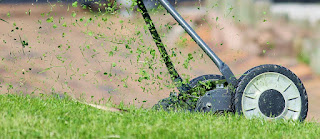What is Grasscycling? The Eco-Friendly Way to Manage Your Lawn
Have you ever mowed your lawn and wondered what to do with all those grass clippings? Instead of bagging them up and tossing them out, there's a simple, eco-friendly solution called grasscycling. But what exactly is grasscycling, and why should you consider it?
Grasscycling Defined
Grasscycling is the practice of leaving grass clippings on your lawn after mowing. Instead of collecting and disposing of these clippings, you let them break down naturally, returning valuable nutrients back to the soil. It's a straightforward method that not only saves time but also benefits your lawn and the environment.
Why Grasscycling is Good for Your Lawn
When you leave grass clippings on your lawn, they act as a natural fertilizer. These clippings are rich in nitrogen, which is a crucial nutrient for healthy grass growth. As the clippings decompose, they release nitrogen, water, and other nutrients back into the soil, nourishing your lawn without the need for chemical fertilizers.
Grasscycling also helps maintain soil moisture, reducing the need for frequent watering. The layer of clippings acts as a mulch, keeping the soil cool and preventing water from evaporating too quickly.
Grasscycling in Practice: How to Do It Right
Grasscycling is easy, but there are a few tips to keep in mind to ensure you do it correctly:
1. Mow Regularly: Keep your grass at the right height. Aim to mow when the grass is about 3 inches tall and cut no more than one-third of the grass blade at a time. This keeps the clippings small and ensures they break down quickly.
2. Use a Sharp Mower Blade: A sharp blade cuts grass cleanly, helping the clippings decompose faster. Dull blades tear the grass, which can stress your lawn.
3. Mow When the Grass is Dry: Wet clippings can clump together and take longer to break down. Mow when your lawn is dry to avoid this problem.
Real-Life Examples of Grasscycling Success
Grasscycling isn't just a concept; it's a practice used by many homeowners and landscapers with great success. For example, in Austin, Texas, the city promotes grasscycling as part of their sustainable lawn care program. Residents who participate report healthier, greener lawns with fewer weeds and reduced watering needs.
In another case, a school district in California implemented grasscycling across its campuses, resulting in significant cost savings on fertilizers and water. The practice also helped the district reduce its waste output, aligning with its environmental goals.
Grasscycling and Our Self-Sustainable City Project
At our self-sustainable city project, grasscycling plays a vital role in our approach to sustainable living. By encouraging residents to adopt grasscycling, we help reduce the amount of yard waste that ends up in landfills. This simple practice also supports our goal of maintaining lush, green spaces without relying on chemical fertilizers or excessive water use.
Grasscycling is just one of the many ways we're working to create a community that lives in harmony with nature. By making small changes like this, we can collectively have a big impact on our environment.
![Self-Sustainable City - Ramakrishna Surathu [Official Website]](https://blogger.googleusercontent.com/img/a/AVvXsEivh2bAyNCG-DxYf4p_lHLcFQx1i8MvbBv91UgzKqAFrNMhT8xW-fwxgNJTdtojgb9aYXiG9EdNYLo8tNmtaakyq-zmnaCeeUGMdpvJ8iOaVzd2tSKEC2UrUXzFJa952LPF-OngfPenpbFOj7b8AcbYtPGSng6xbGr-_NwEIRpXZg_QdKLGRMGeg5pWmtaQ=s1280)

No comments:
Post a Comment